Last updated on July 7, 2014
24 “No one can serve two masters; for either he will hate the one and love the other, or he will be devoted to one and despise the other. You cannot serve God and wealth.
Matthew 6
In reference to our subject today, you can’t please everyone. Focus on one thing or the other, because you’re bound to alienate someone. One will last forever and the other will fade away; this applies to AAA games as much as anything else.
No game that I played in the past year or so better demonstrates the continual dichotomy between game and mass media product better than Splinter Cell Blacklist. In terms of graphical design, presentation, and “movie-like” qualities, it presents everything exemplary and inadequate about the “please everybody” model with which video games with incredibly high budgets must contend. Either the experience gets in the way of the game, or the game gets in the way of the experience – Ubisoft Toronto tries its hardest to nail the balance, and comes up short.
So what do I mean by “mass media product”? Mostly, Splinter Cell tries to be all things to all people. Sam Fischer’s latest opus wants to be an action movie (or, really 24) at the same time that it is a stealth-action game. Trying to combine Jack Bauer and Solid Snake didn’t work so well in Its previous iteration; for many fans, Splinter Cell Conviction went far from the stealth-action roots of the previous games. Gone were the tense moments of waiting in the shadows, analyzing patterns, and seeing an opening to escape, and in its place came incredible production values, Michael Bay-esque political thrilling, and a skill-less Execution system (mark four targets, press a button and kill them all immediately) that turned the game into a target range.
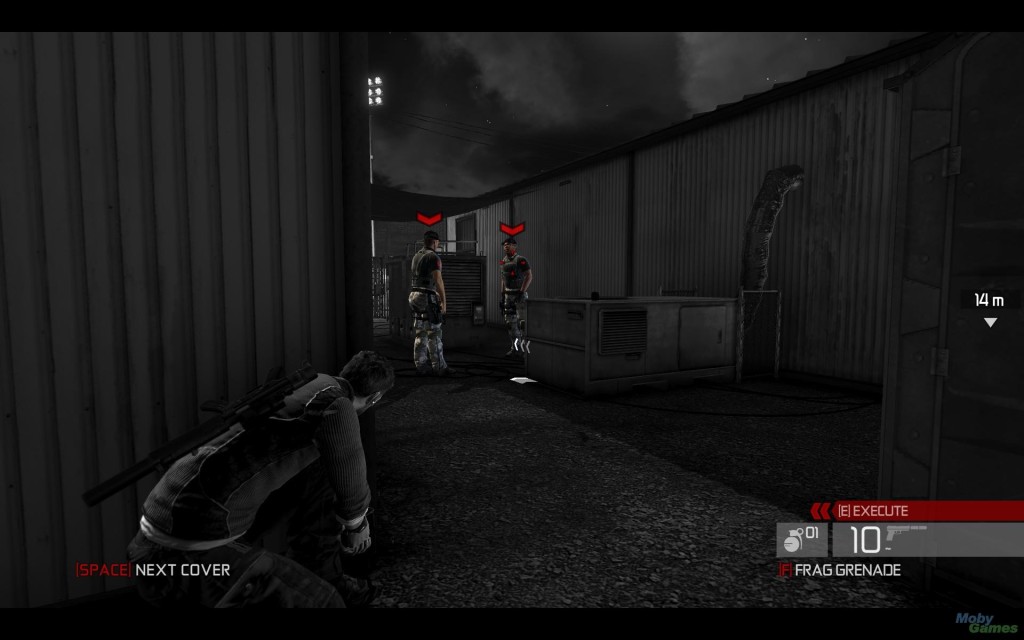
In one sense, Conviction suceeded in making Splinter Cell a bonafide big budget action franchise, but not without alienating the original franchise fans. Thus, Blacklist scales the action scaled it back quite a ways by re-emphasizing stealth. We’re back to the quiet comfort of the darkness! At a cursory glance, we might call this the rightful successor to Chaos Theory, probably the best in the franchise up until Blacklist.
Unfortunately, before we can talk any mechanics, we must discuss the story. And why must we discuss it? Because said story remains IN YOUR FACE, all the time. Now, that’s not to say it isn’t entertaining; I lament the loss of Michael Ironside with Generic Angry White Dude, but that functions well enough. It plays like an extended globe-trotting episode of 24, bouncing between incendiary political locations (like Guantanamo Bay) to dangerous foreign countries (Iran and wherever else you could imagine) to the possible site of attacks on United States soil. Like most Tom Clancy games, it takes a right-leaning hard stance on American foreign intervention and whatnot, but accepting that turns it into a perfect entertaining, if somewhat predictable, tale.
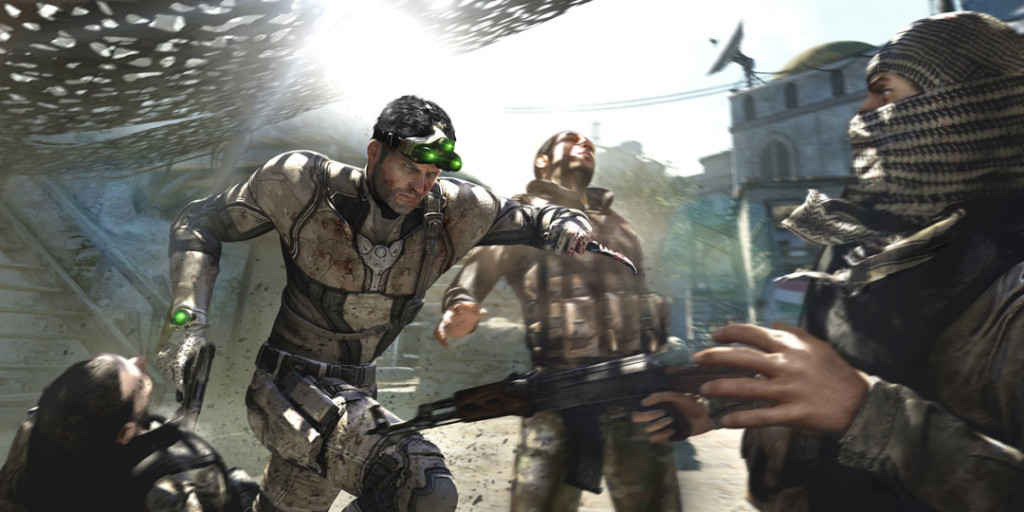
You would imagine such a plot would allow them some interesting and exciting locations for the actual “game” portions, and for the most part that does happen. The unfortunate thing comes from the way Splinter Cell Blacklist REALLY tries to appeal to that ever-elusive Call of Duty demographic, the core gamer, and the everyman at the same time. If Splinter Cell remains a “stealth” game, then Blacklist forces you into quite a few “non-stealth” situations. The story forces you to play in particular ways depending on what mission, and while this forces you to adapt/variety/etc, there’s still way too much combat for a stealth game. Why does Ubisoft force me to attack things in the open so much? I don’t understand; am I a secret agent, a shadow, or a walking tank of destruction?
I understand why they did this, though (other than the obvious).The game ranks your performance based on three different styles: Ghost, Panther, or Assault. Ghost means complete stealth with non-lethal kills (ideally, not being detected by any enemies). Assault goes the complete other way, with open combat situations and killing everything (hence the Call of Duty appeal). Lastly, Panther combines the two, with stealth kills from the shadows being the norm. The campaign tries to ease you into the styles so that you may implement them in the side missions, which allow you to play whatever way you want. Well, excepting a few that give you bonuses for stealth, i.e., the FOCUS of Splinter Cell. In any case, there’s a clear attempt to foster variety in your tactics and keep you off-balance.
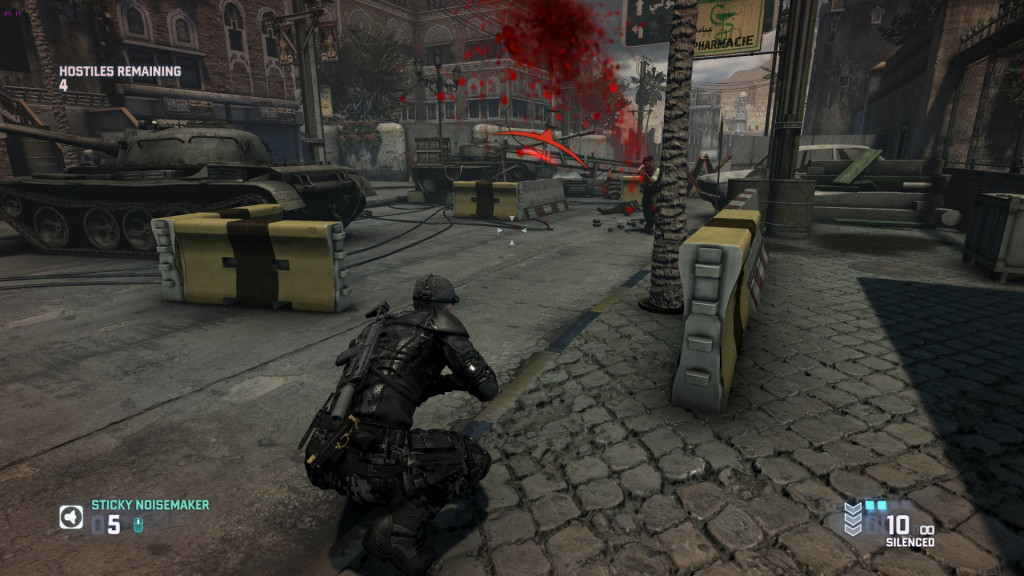
I imagine all of this would feel quite brilliant on the normal difficulty, but I assumed Realistic would give me a better understanding of any possible flaws. Unsurprisingly, Realistic makes Assault all but impossible; even with the highest level armor, I was simply too fragile to pop out in the open against any sustained gunfire. Since they’ve updated the Execution system (now, you need to kill or takedown enemies up close to be able to use up to three Execution charges), this means stealth actually worked out as the best approach in nearly every circumstance…except when the campaign, obviously NOT suited for Realistic, slammed you with an open combat sequence that took many retries. Same goes for the “gimmick” levels and boss battles – they’re awful sequences of dumb trial and error, completely unsatisfying when you win.
In the end, though, the rules and systems themselves work so brilliantly as to transcend all of this crap. I spent the majority of my time playing the side missions, which offer wonderfully designed maps with great structure suited to all three styles. Even on higher difficulties, Assault felt perfectly viable as long as you were willing to kill forty or more soliders/dogs. Panther and Ghost surely fit as the ideal for this, but these missions off the beaten path remind me the most of my impressions of Splinter Cell: smart, patient stealth-action. Waiting for an enemy to pass near you, only to be seconds from detecting you before you disable him, still provides a rush unlike any other, and Blacklist really excels at this! There’s my public service announcement: play on Realistic or above to get the full experience of being fragile AND needing on-the-fly ingenuity to succeed.
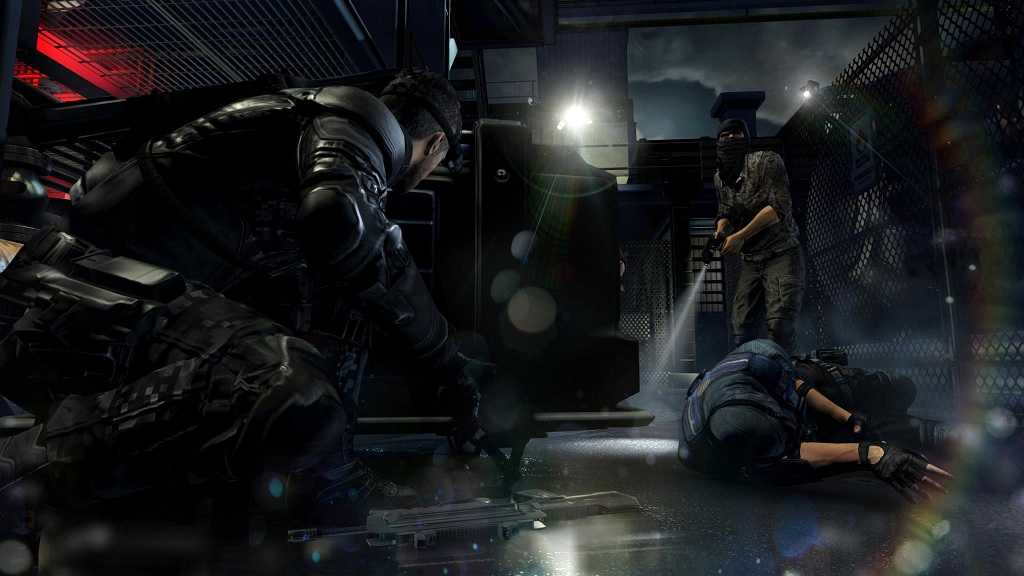
The UI gives you very clear indications on when you’re in shadow or not. The cover system, similar to Gears of War, allows you to cleanly attach and de-attach yourself from safe cover, and the sprint means you can move abnormally fast without making a sound. There’s almost never a moment where you are seen and it isn’t your fault, since the indicators remain so clear (and also helpfully marked by Sam’s suit glowing in the darkness). The upgrade system gives you plenty of incentive to do missions and retry them with different setups, as there’s a multitude of weapons, gadgets, armor, and alternate equipment to use in these violent virtual playgrounds. My personal favorite comes in the form of a silent shotgun – completely absurd and dumb, but this here is a vidya game, so roll with it.
I should also note the impressive AI. Occasionally, enemies act like omniscient robots and just magically find where Sam Fischer lies, but usually they find you realistically. They examine anything out of the ordinary, especially broken light fixtures and open doors. If they find a dead or disabled body, they’ll go on full alert mode until they find you, which makes hiding much harder. Abusing their habits and analyzing patterns is still very much possible, but your personal actions will turn a good situation into a bad one if you make the wrong moves at the wrong time.
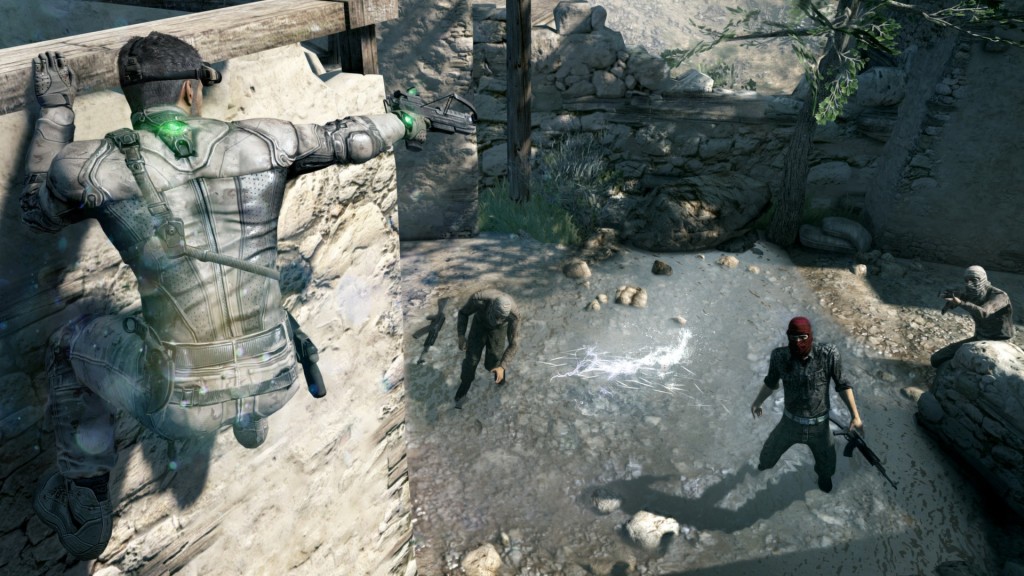
Up the difficulty level, and the margin for error turns incredibly slight, forcing you to play completely in the shadows. Perfectionist emphasizes stealth to the utmost degree, removing the Execution system entirely to show how you can complete any mission in the game without it. Implementing all of your various tools turns into a necessary factor, and a AAA game actually wants to challenge you for once! I am certainly up for that challenge when I get to it! I imagine I will need to take a dive into the co-operative missions and Spies vs. Mercs, though I imagine much of the same applies to those modes.
In the end, you can imagine Splinter Cell Blacklist as an Ugly Duckling – man, is it ugly at first, but the game mechanics grow on you over time to become one of the best stealth-action games in this system generation. If you can stomach a bit of HARDCORE POLITICAL THRILLER with your stealth game (and hey, Dishonored did a little of the same), then you’ll find yourself perfectly pleased with Splinter Cell Blacklist. I know I am.
Honestly, I believe Blacklist deserved a three star rating overall, but considering how much fun I had, I couldn’t help but bump it up to four just on the strength of the systems underneath. Think of it as my “glass half full” three and a half stars.
